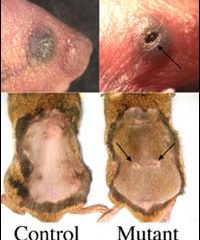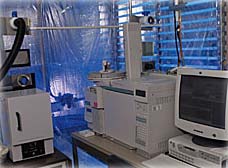Life Sciences and Chemistry
Articles and reports from the Life Sciences and chemistry area deal with applied and basic research into modern biology, chemistry and human medicine.
Valuable information can be found on a range of life sciences fields including bacteriology, biochemistry, bionics, bioinformatics, biophysics, biotechnology, genetics, geobotany, human biology, marine biology, microbiology, molecular biology, cellular biology, zoology, bioinorganic chemistry, microchemistry and environmental chemistry.

Protein critical for development in fruit flies found to aid healing of cuts and wounds in mammals
Biologists at the University of California, San Diego have determined that a protein essential for the normal embryonic development of fruit flies is also used by mammals to assist in the timely healing of cuts and lacerations.
Their discovery, detailed in the June 3 issue of the journal Developmental Cell, provides new insight for scientists into the molecular mechanisms responsible for wound healing in humans and may one day lead to the design of new drugs for individuals whose healing is

Chemical turns stem cells into neurons say scientists at Scripps Research Institute
A group of researchers from The Scripps Research Institute (TSRI) and the Genomics Institute of the Novartis Research Foundation (GNF) have identified a small chemical molecule that controls the fate of embryonic stem cells.
“We found molecules that can direct the embryonic stem cells to [become] neurons,” says Sheng Ding, who recently completed his Ph.D. work at TSRI and is becoming an assistant professor in the chemistry department. Ding is the lead author on the study, which is described

Yeast, wormwood & bacterial genes combine in microbial factory to make antimalarial drug
By combining genes from three separate organisms into a single bacterial factory, University of California, Berkeley, chemical engineers have developed a simpler, less expensive way to make an antimalaria “miracle” drug that is urgently needed in Third World countries.
The drug, artemisinin, is one of the most promising next-generation antimalarials because of its effectiveness against strains of the malaria parasite now resistant to front-line drugs. It is now too expensive for broad use i

Scientists develop new RNAi knockdown technology
Scientists from the RIKEN Tsukuba Institute (Japan) have developed a valuable new experimental system for tissue-specific RNAi knockdown in mammalian cells and organisms – a discovery that will markedly advance the functional characterization of genes involved in development and disease.
Discovered in the late nineties, RNA intereference (RNAi) refers to the introduction of double-stranded RNA (dsRNA) into a cell, where it induces the degradation of complementary mRNA, and thereby suppresse

Chamber reveals chemical secrets
What if there were a magical chamber that could divulge the secrets of anything that was placed inside of it? Pacific Northwest National Laboratory has developed such a chamber—and while it won’t divulge all secrets, it discloses key information about chemicals and compounds.
That information may be useful in addressing a wide range of issues that affect the environment and quality of life—everything from sick building syndrome and industrial emissions monitoring and control to sensor testi

Why have sex? The answer is not as simple as we thought.
Theories abound as to why organisms favour sexual reproduction, but testing these has been notoriously difficult. A common view is that sexual reproduction helps to reduce the effects of damaging mutations within a population. Now researchers from the Rockefeller University have tested this premise, using careful measurements of bacterial populations, and provide evidence against it. The research published today in Journal of Biology examines how mutant bacteria respond to different forms of